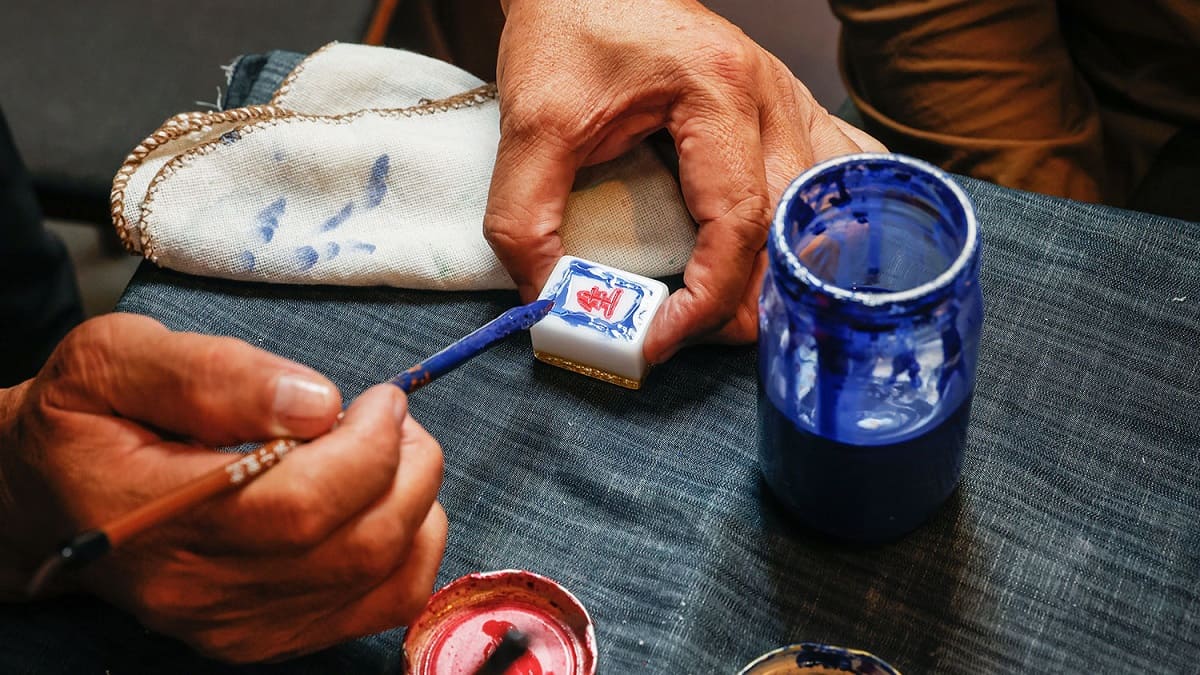Mahjong, a timeless game that has captured the hearts of many, is more than just a pastime; it’s a reflection of history, culture, and art. The intricate designs and symbols on Mahjong tiles have rich stories to tell. In this article, we will embark on a journey to uncover the captivating history of Mahjong tile names and origins. From the humble bamboo tiles to the majestic dragons, we will delve into the depths of this ancient game.
The Origins of Mahjong Tiles
The origins of Mahjong tiles can be traced back to the Qing Dynasty in China. Mahjong’s name itself, “Mahjong,” can be translated as “sparrows,” which is a nod to the sound the tiles make when shuffled. It’s a testament to the game’s deep-rooted history in Chinese culture, a history that is intricately woven into the symbols and designs on the tiles.
One of the foundational elements of Mahjong is the bamboo tiles. These tiles feature intricate bamboo patterns, symbolizing growth, resilience, and flexibility, which are qualities essential for both success in life and the game of Mahjong itself. These bamboo tiles are part of the first of three suits, and they provide a glimpse into the ancient wisdom and symbolism that underpin the game.
Bamboo: The Foundation of Mahjong
The journey begins with the bamboo tiles, a foundational element of Mahjong. These tiles are adorned with intricate bamboo patterns, which symbolize growth, resilience, and flexibility – all qualities crucial to success in life and the game of Mahjong. The bamboo tiles are the first of three suits, and their origins date back to ancient Chinese wisdom.
- Ancient Symbolism: Bamboo tiles in Mahjong are adorned with intricate bamboo patterns, which hold deep symbolism and significance.
- Growth and Resilience: The bamboo patterns on these tiles symbolize growth, resilience, and flexibility, reflecting qualities essential for both life and success in Mahjong.
- First of Three Suits: Bamboo tiles are a part of the first of three suits in Mahjong, setting the stage for the game’s progression.
- Chinese Wisdom: These tiles offer a glimpse into ancient Chinese wisdom, where nature and its elements are often used as metaphors for life and philosophy.
- Cultural Significance: Bamboo, in Chinese culture, is associated with longevity and endurance, making it a meaningful choice for the foundational tiles of Mahjong.
- Artistry and Craftsmanship: The bamboo patterns are a testament to the artistry and craftsmanship that goes into creating Mahjong tiles.
Characters: The Essence of Communication
The character tiles, with their elegant Chinese calligraphy, represent the essence of communication. Each character carries a unique meaning and significance. Understanding these characters is not only essential for the game but also an opportunity to delve into the beauty of the Chinese language.
Circles: The Cycles of Life
“Circles,” also known as “dots” or “coins” in Mahjong, represent the cycles of life. The circle tiles, with their simple yet intricate designs, hold a profound meaning in the game. Just as life is a continuous journey with its ups and downs, the circle tiles remind us of the ever-turning wheel of fortune. They symbolize the ebb and flow of existence, where moments of abundance and scarcity follow one another, much like the cycles in Mahjong itself.
Majestic Dragons: Guardians of Mahjong
Majestic dragons hold a special place in the world of Mahjong, serving as guardians and powerful symbols within the game. These mythical creatures are not just pieces of a game but carry deep cultural and symbolic significance.
The Green Dragon tile, often depicted as a vibrant green dragon with a sparkling pearl, symbolizes renewal and change. In Chinese culture, the dragon is seen as a powerful, transformative force. Its presence in Mahjong signifies a shift in the game’s dynamics, urging players to adapt and strategize. The Red Dragon, sometimes known as the Red Phoenix, stands as a divine guardian in the world of Mahjong. This tile symbolizes virtue, loyalty, and protection. It brings a sense of balance and harmony to the game, reminding players of the values that are integral to success in both Mahjong and life. The White Dragon, shrouded in mystery, represents the unknown. It is a tile of unpredictability, and its appearance can dramatically change the course of the game. In Mahjong, as in life, the White Dragon reminds us that some things remain hidden, waiting to be revealed. These dragons, with their individual traits and symbolism, add layers of depth and strategy to the game, making Mahjong not just a pastime but a profound cultural experience.
- The Green Dragon: Symbol of Renewal
The Green Dragon tile, often depicted as a vibrant green dragon with a sparkling pearl, symbolizes renewal and change. In Chinese culture, the dragon is a symbol of power and transformation, and its presence in Mahjong signifies a shift in the game’s dynamics. - The Red Dragon: The Divine Guardian
The Red Dragon, sometimes known as the Red Phoenix, stands as a divine guardian in the world of Mahjong. It symbolizes virtue, loyalty, and protection. Its presence brings a sense of balance and harmony to the game. - The White Dragon: The Unseen Mystery
The White Dragon, shrouded in mystery, represents the unknown. It is a tile of unpredictability, and its appearance can turn the tide of the game. In Mahjong, as in life, the White Dragon reminds us that some things remain hidden, waiting to be revealed.
FAQs
Q: What is the origin of the term “Mahjong”? A: The term “Mahjong” can be translated as “sparrows” in Chinese, reflecting the sound the tiles make when shuffled.
Q: What do the bamboo tiles in Mahjong symbolize? A: Bamboo tiles represent growth, resilience, and flexibility – qualities essential for both life and Mahjong.
Q: What is the significance of the character tiles in Mahjong? A: Character tiles feature Chinese calligraphy and represent the essence of communication, with each character carrying unique meanings.
Q: What do circle tiles in Mahjong symbolize? A: Circle tiles, also known as “dots” or “coins,” represent the cycles of life and the turning wheel of fortune.
Q: What does the Green Dragon tile symbolize in Mahjong? A: The Green Dragon symbolizes renewal and change, reflecting the Chinese dragon’s power and transformative qualities.
Q: Why is the Red Dragon important in Mahjong? A: The Red Dragon, or Red Phoenix, serves as a divine guardian, symbolizing virtue, loyalty, and protection in Mahjong.
In conclusion, the world of Mahjong tile names and origins is a captivating journey through the heart of an ancient game that transcends time and culture. The bamboo tiles, with their symbolism of growth and resilience, represent the very foundation of Mahjong, echoing the enduring qualities necessary for success in both the game and life. The majestic dragons, with their deep cultural and symbolic significance, act as guardians and bring a sense of balance and mystery to Mahjong, enriching the experience with their unique traits.
As you sit down for a game of Mahjong, remember that each tile tells a story, and understanding these stories not only deepens your appreciation for the game but also connects you with centuries of Chinese wisdom and tradition. Mahjong is more than a game; it’s a cultural treasure that continues to fascinate and inspire players around the world, and the tales of its tiles are an integral part of that enduring allure.

